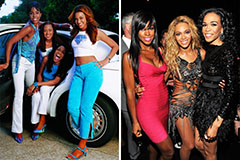Gangnam’s karaoke lifestyle is often a lively tapestry woven from South Korea’s quick modernization, adore for new music, and deeply rooted social traditions. Regarded regionally as noraebang (singing rooms), Gangnam’s karaoke scene isn’t pretty much belting out tunes—it’s a cultural establishment that blends luxury, technological know-how, and communal bonding. The district, immortalized by Psy’s 2012 world-wide hit Gangnam Model, has extended been synonymous with opulence and trendsetting, and its karaoke bars are not any exception. These spaces aren’t mere leisure venues; they’re microcosms of Korean Culture, reflecting both of those its hyper-present day aspirations and its emphasis on collective joy.
The story of Gangnam’s karaoke society begins from the 1970s, when karaoke, a Japanese creation, drifted across the sea. To begin with, it mimicked Japan’s public sing-alongside bars, but Koreans immediately tailor-made it for their social cloth. Through the nineteen nineties, Gangnam—currently a image of prosperity and modernity—pioneered the change to private noraebang rooms. These spaces available intimacy, a stark contrast on the open up-phase formats elsewhere. Consider plush velvet coupes, disco balls, and neon-lit corridors tucked into skyscrapers. This privatization wasn’t pretty much luxury; it catered to Korea’s noonchi—the unspoken social consciousness that prioritizes team harmony around person showmanship. In Gangnam, you don’t complete for strangers; you bond with mates, coworkers, or family members devoid of judgment.
K-Pop’s meteoric increase turbocharged Gangnam’s karaoke scene. Noraebangs here boast libraries of A huge number of tracks, although the heartbeat is undeniably K-Pop. From BTS to BLACKPINK, these rooms Enable fans channel their inner idols, complete with large-definition audio video clips and studio-quality mics. The tech is slicing-edge: touchscreen catalogs, voice filters that car-tune even the most tone-deaf crooner, and AI scoring methods that rank your efficiency. Some upscale venues even offer you themed rooms—Assume Gangnam Model horse dance decor or BTS memorabilia—turning singing into immersive ordeals.
But Gangnam’s karaoke isn’t only homepage for K-Pop stans. It’s a force valve for Korea’s get the job done-tricky, Participate in-tricky ethos. Just after grueling twelve-hour workdays, salarymen flock to noraebangs to unwind with soju and ballads. College or university learners blow off steam with rap battles. Family members rejoice milestones with multigenerational sing-offs to trot audio (a genre older Koreas adore). There’s even a subculture of “coin noraebangs”—very small, 24/seven self-provider booths the place solo singers shell out per song, no human conversation wanted.
The district’s world-wide fame, fueled by Gangnam Type, remodeled these rooms into tourist magnets. Readers don’t just sing; they soak in a very ritual that’s quintessentially Korean. Foreigners marvel for the etiquette: passing the mic gracefully, applauding even off-essential attempts, and never hogging the Highlight. It’s a masterclass in jeong—the Korean principle of affectionate solidarity.
Yet Gangnam’s karaoke lifestyle isn’t frozen in time. Festivals much like the annual Gangnam Competition blend conventional pansori performances with K-Pop dance-offs in noraebang-encouraged pop-up phases. Luxury venues now give “karaoke concierges” who curate playlists and blend cocktails. Meanwhile, AI-pushed “potential noraebangs” analyze vocal styles to propose songs, proving Gangnam’s karaoke evolves as rapid as the city alone.
In essence, Gangnam’s karaoke is a lot more than entertainment—it’s a lens into Korea’s soul. It’s where by tradition satisfies tech, individualism bends to collectivism, and each voice, Regardless of how shaky, finds its instant beneath the neon lights. Whether you’re a CEO or maybe a tourist, in Gangnam, the mic is usually open, and the subsequent strike is just a simply click away.
 Haley Joel Osment Then & Now!
Haley Joel Osment Then & Now! Spencer Elden Then & Now!
Spencer Elden Then & Now! Destiny’s Child Then & Now!
Destiny’s Child Then & Now! Michael Fishman Then & Now!
Michael Fishman Then & Now! Kane Then & Now!
Kane Then & Now!